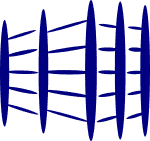Scenario of Hard Savings versus Soft Savings
“Joe, you do know that the company is emphasizing a lot on cost saving projects recently. We need to ensure that we are achieving the targets given to us in terms of the savings figures.” Frank was highlighting to Joe on the importance of the KPI (key performance index) provided to the team.
“Well, Frank. Please help me understand then. How do we calculate the cost savings from each project?” Joe asked.
Frank replied, “Joe, if it impacts the P&L (profit and loss) and bottom line, then that will be a cost saving project.”
Joe asked, “What happens if the situation I am going to describe next occurs? Will this be considered a cost saving project?
The inbound process, after implementing a project, has a productivity increase. As a result, 2 manpower can be freed up.
However, because there is an increase in outbound volume, the 2 manpower are now shifted to the outbound team. As a result, there is no net savings. There is no visibility in the P&L. Will this be considered a cost saving project?”

Definition of hard savings and soft savings
Hard savings – dollars to the bottom line now. Direct impact to the “profit and loss statement”.
Soft savings – possibility of dollars to the bottom line in the future. Intangible with no definite price tag attached to them.
Jan Kosina, a PhD. student from Czech Republic, in one of his papers, breaks down the various categories of cost saving projects.
| Savings category | Saving type | Improvement area | Indicator |
| Hard | Revenue enhancement | Capacity increase | Production volume |
| Cost reduction | Quality improvement | pieces per minute | |
| Cost reduction | Incoming material price and quality | Reduction of input costs | |
| Cost reduction | Process efficiency | Efficiency, cost reduction | |
| Soft | Cash flow improvement | Inventory reduction | Inventory level reduction |
| Cost avoidance | Testing | Testing time, testing frequency | |
| Capital avoidance | Production flow optimization | Capital investment budget |
The Process to Estimate Economical Benefits of Six Sigma Projects (Jan Kosina)
Based on iSixSigma, it is possible to split the projects into 4 categories across a spectrum.
Category A: It’s in the P&L, and for the current period.
Category B: It’s a little more out in the future: savings on the balance sheet, cash flow, or working capital.
Category C: Shifting to soft savings. Cost avoidance or capacity enhancement. Savings will occur, but there is no positive confirmation of this.
Category D: It’s the right thing to do, but you have no proof and no quantifier.
Common Hard Savings
- Reduction in unit cost of operations
- Reduction in unit cost of production
- Reduction in transaction cost
- Reduction in overhead cost
- Reduction in transportation cost
- Reduction in manpower
- Increased throughput, resulting in increased sales or revenue
Common Soft Savings
- Reduction in cash flow
- Reduction in need for working capital
- Avoidance of capacity enhancement
- Conformation to changes in the law
- Increased safety in the workplace
- Increased employee satisfaction
- Increased customer satisfaction
Other websites
- Aveta Business Institute – Six Sigma Online
- esourcingwiki.com – Author (Michael Lamoureux,PhD)
- Velaction Continuous Improvement
Continuation of the above story..
Because the emphasis was on hard savings, Joe decided not to pursue some of the projects that were beneficial to the operations. Instead, to fulfill the requirement of the management, he decided to focus only on projects that brought to immediate savings to the P&L.
At times, Joe was also unsure of the category the estimated savings belonged to.
Conclusion
It would have been ideal if the management has a set of definition on the type and categories of cost savings projects. This would definitely bring clarity to the operations on the possible projects that they could embark on.
In addition, aside from hard savings that ultimately impact the P&L, soft savings must not be neglected as well. These soft savings projects would be transformed to hard savings in time to come.
